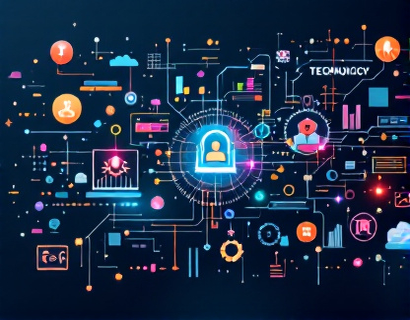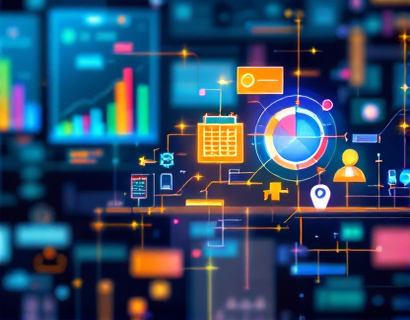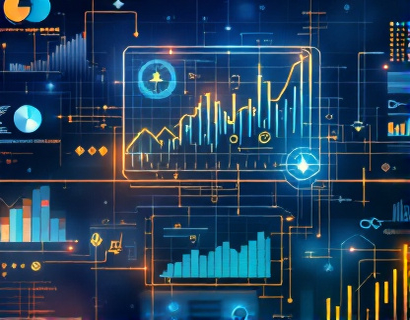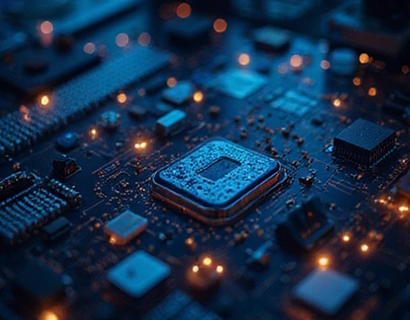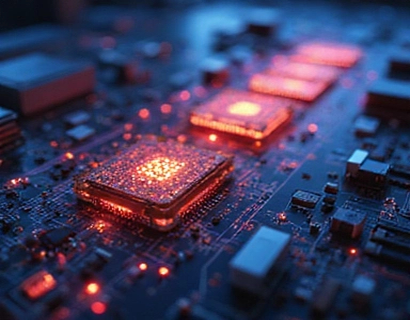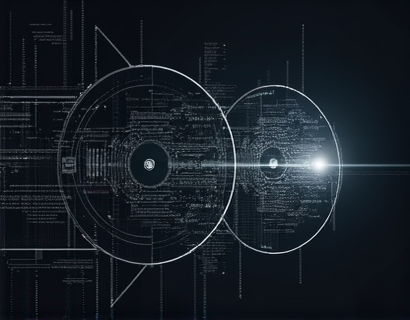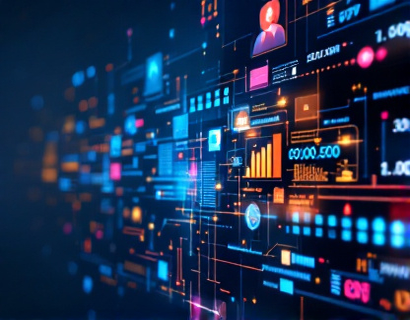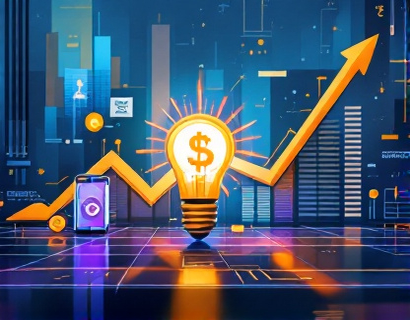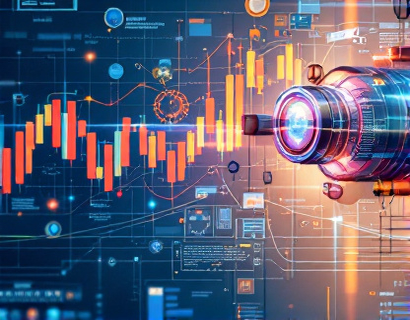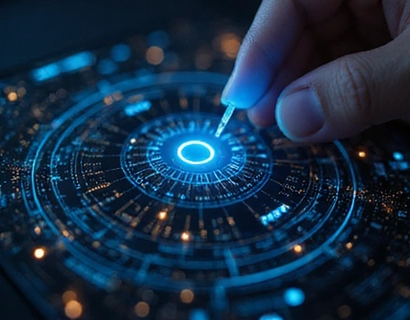Decentralized Transformation: Harnessing Crypto and AI for Next-Gen Digital Solutions
The digital landscape is undergoing a profound transformation, driven by the convergence of cryptocurrency and artificial intelligence. This intersection is giving rise to decentralized applications and intelligent services that are redefining user experiences and engagement. For tech enthusiasts and early adopters, this is an exciting time to explore the future of innovation. This guide delves into the synergy between crypto and AI, offering insights into how these technologies are shaping the next generation of digital solutions.
The concept of decentralization has been a cornerstone of the internet since its inception, but with the advent of blockchain technology, it has taken on a new dimension. Decentralized applications, or dApps, operate on blockchain networks, eliminating the need for central authorities and intermediaries. This not only enhances security and transparency but also empowers users by giving them control over their data and transactions. The integration of AI into these decentralized systems further amplifies their capabilities, creating intelligent, adaptive, and user-centric services.
One of the key benefits of decentralized applications is their resilience and reliability. Traditional centralized systems are vulnerable to single points of failure, hacking, and censorship. In contrast, dApps distribute data and processing across a network of nodes, making them inherently more secure and robust. For instance, a decentralized social media platform can operate without a central server, reducing the risk of data breaches and ensuring user privacy.
AI, on the other hand, brings intelligence and automation to these decentralized systems. Machine learning algorithms can analyze vast amounts of data to provide insights, predict trends, and personalize user experiences. In the context of dApps, AI can enhance functionalities such as content recommendation, fraud detection, and smart contract execution. This synergy not only improves efficiency but also opens up new possibilities for innovation.
To understand the practical applications of this technology combination, consider the finance sector. Decentralized finance, or DeFi, is a prime example of how crypto and AI are transforming traditional financial services. DeFi platforms offer a range of financial products, including lending, borrowing, and trading, all executed on blockchain networks. AI algorithms can optimize these processes by analyzing market data, identifying trends, and automating trades, thereby reducing human error and increasing profitability.
Another area where crypto and AI are making waves is in supply chain management. Traditional supply chains are often opaque and inefficient, leading to delays and losses. By leveraging blockchain for transparency and AI for predictive analytics, companies can track products from origin to destination in real-time. AI can predict demand, optimize inventory, and detect potential bottlenecks, ensuring a smoother and more efficient supply chain.
The healthcare industry is also benefiting from the integration of crypto and AI. Patient data security is a critical concern, and decentralized health records managed on blockchain can ensure that sensitive information is stored securely and accessed only by authorized parties. AI can analyze medical data to assist in diagnosis, treatment planning, and drug discovery. For example, machine learning models can identify patterns in patient data to predict disease outbreaks or personalize treatment regimens, leading to better health outcomes.
In the realm of Internet of Things (IoT), the combination of crypto and AI is enabling more secure and autonomous devices. IoT devices generate massive amounts of data, which can be processed and analyzed using AI to derive meaningful insights. Blockchain ensures that this data is transmitted securely and that devices operate independently without central control. This is particularly important for smart cities, where IoT devices manage everything from traffic flow to energy consumption, requiring both security and efficiency.
The creative industry is not lagging behind either. Artists and content creators can use blockchain to authenticate and monetize their work directly, bypassing intermediaries like galleries and distributors. AI can assist in generating art, music, and even writing, providing new tools for creativity. For instance, AI-generated music can be stored on a blockchain to prove ownership and ensure fair compensation for creators.
To fully harness the potential of crypto and AI, it is essential to understand the underlying technologies. Blockchain is a distributed ledger technology that records transactions across multiple computers in a way that is secure, transparent, and tamper-proof. Each block in the chain contains a cryptographic hash of the previous block, a timestamp, and transaction data. This structure ensures that once data is recorded, it cannot be altered without consensus from the network.
AI, particularly machine learning, involves training algorithms on large datasets to perform tasks that traditionally required human intervention. Supervised learning, unsupervised learning, and reinforcement learning are key paradigms within AI. In the context of decentralized applications, AI models can be trained on decentralized data sources, ensuring that the data remains private and the models are robust and unbiased.
One of the challenges in deploying crypto and AI solutions is scalability. Blockchain networks, especially those using proof-of-work consensus mechanisms, can be slow and energy-intensive. To address this, newer consensus algorithms like proof-of-stake and sharding are being developed to increase transaction throughput and reduce energy consumption. On the AI side, the computational demands of training complex models can be mitigated by leveraging edge computing and optimized algorithms.
Interoperability is another critical aspect. As the number of blockchain platforms and AI systems grows, the ability to seamlessly integrate and communicate between different systems becomes essential. Standards and protocols like InterPlanetary File System (IPFS) and atomic swaps are being developed to facilitate interoperability, allowing dApps to interact with each other and with traditional systems.
User adoption is paramount for the success of decentralized crypto and AI solutions. Education and user-friendly interfaces are crucial in making these technologies accessible to a broader audience. Decentralized applications should be designed with simplicity in mind, ensuring that users can navigate and utilize them without extensive technical knowledge. Additionally, incentives such as token rewards can motivate users to engage with and contribute to these platforms.
Looking ahead, the future of decentralized crypto and AI is promising. As more developers and organizations adopt these technologies, we can expect to see more innovative applications across various industries. The convergence of decentralization, blockchain, and AI will continue to drive advancements in areas such as privacy, security, and efficiency. The potential for decentralized autonomous organizations (DAOs) and decentralized governance models is also on the horizon, offering new ways to manage and govern digital ecosystems.
In conclusion, the intersection of cryptocurrency and AI is revolutionizing the digital landscape, giving rise to decentralized applications and intelligent services that enhance user experiences and drive innovation. For tech enthusiasts and early adopters, this is an exciting time to explore and contribute to the next generation of digital solutions. By embracing the power of crypto and AI, we can unlock a future where technology serves humanity in more secure, transparent, and empowering ways.








